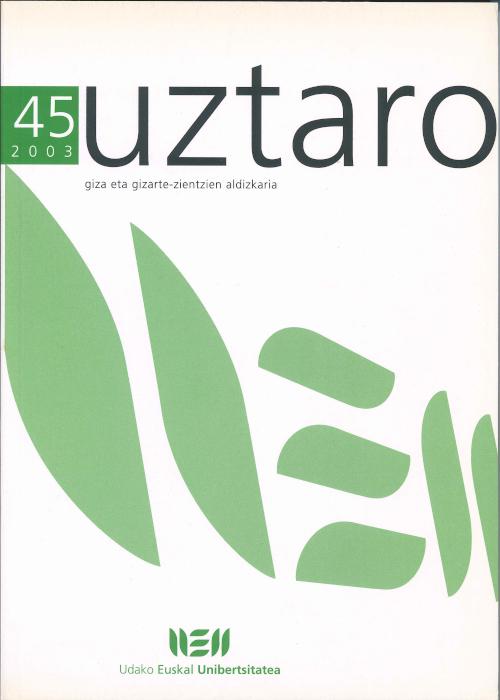HIESa fenomeno sozial gisa: irudikapen sozialen dinamikari buruzko ikerketa bat
Laburpena
HIESaren irudikapen sozialen dinamiken emaitzak aurkezten dira lan honetan, Doise-ren (1993) Eredu Trifasikoaren bitartez. 130 subjekturen lagina hartu zen eta, galdera irekiek —HIESaren esanahia— eta itxiek —HIESaren emozioak (Echebarria et al., 1991), kausak eta arriskua (Petrillo, 1996)— osaturiko galde-sorta erabili zen. Lehenengo, KFAren bidez HIESari buruzko kontzepzio partekatuak aztertu dira, eta ondoren norbanakoen koka- penak, KFA eta Faktore Analisiaren bidez. Azkenik, kokapenen ainguraketak ikertu dira bi elementuren bidez: hitzen asoziazio askearen estimuluak KFAren bidez aztertuz (HIESa, HIESdun pertsona, Drogazalea eta Homose- xuala) eta Analisi Diskriminatzailearen bitartez. Emaitzen arabera, HIESaren printzipio artikulatzaileen kontsentsuak norbanakoaren kokapenetan hetereo- geneitatea ahalbidetzen du, eta 3 subjektu-talde agertu dira: estereotipatuak, gupidatsuak eta kontserbadoreak. Azkenik, norbanakoen arteko kokapenak HIESarekin erlazionaturiko uste-sistemarekiko atxikimenduaz ezaugarritzen dira: batetik, homosexualitateari eta drogazaletasunari buruzko diskurtsoekin, eta, bestetik, HIESaren emozio, kausa eta arrisku-hautematearen printzipio antolatzaileekin.Deskargak
Deskargen datuak oraindik ez daude eskuragarri.
Lizentzia
Copyright (c) 2003 Uztaro

This work is licensed under a Creative Commons Attribution-NonCommercial-ShareAlike 4.0 International License.
Downloads
Argitaratua
2003-10-28
Aipuak nola egin
Orella, L., Valencia Garate, J., Saiz, A., Olaizola, A., Salaverria Larrarte, A. J., Peña, O., & Agirrezabal Prado, A. (2003). HIESa fenomeno sozial gisa: irudikapen sozialen dinamikari buruzko ikerketa bat. Uztaro. Giza Eta Gizarte-Zientzien Aldizkaria, (45), 101–116. Berreskuratua -(e)tik https://aldizkariak.ueu.eus/index.php/uztaro/article/view/4119
















